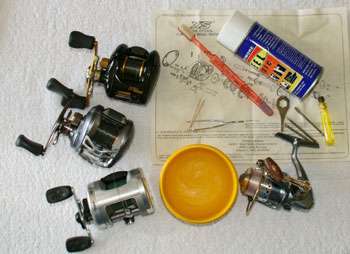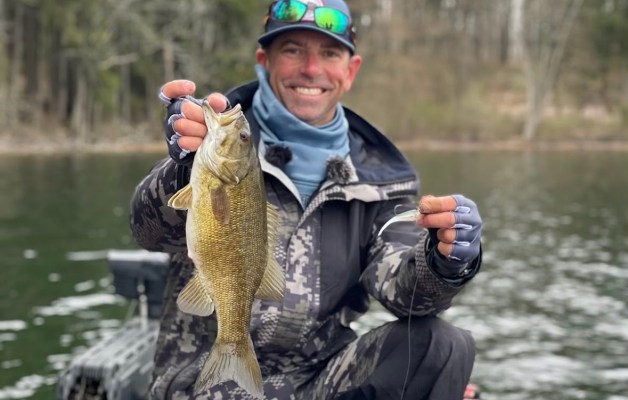
Modern fishing reels are complex pieces of equipment. Take one apart and it looks much like an old-fashioned watch — lots and lots of tiny parts whose purpose is known only to a few select engineers.
But that doesn’t mean we can’t take care of them. With a little knowledge and some time and patience we can keep them in tip-top shape. Thanks to Connie and Tommy Kilpatrick of Lake Fork Tackle Repair (www.lakeforktacklerepair.com), we can get the knowledge we need from their DVD, Fishing Reel Maintenance 2.
You’re on your own when it comes to time and patience.
“Most anglers want to be able to repair and maintain their own reels. They want to know how and why they work. But let’s face it, modern reels are complicated. We relied on our years of reel repair experience to make this DVD. It’ll help the average angler keep his reel working in good condition for many years and save him money too,” says Connie.
Each reel is a little bit different, but the basics are the same. Here are the elementary steps the Kilpatricks recommend to keep your reel working properly:
1. Assemble the proper tools before you begin. “You’ll need two small screwdrivers — a slot head and a Phillips — along with a pair of tweezers and an old toothbrush. If you have the wrench and parts list that came with your reel, keep them handy, too.”
2. Assemble the proper cleaning supplies. “We recommend a pan of hot water, Simple Green cleaning compound, Ronsonol Lighter Fluid, TG’s Rocket Fuel Hi-Speed Reel Oil, Reel X and Super Lube Grease.”
3. Take your reel apart properly. “When you take your reel apart lay out the parts on a mat of some sort. Put a strip of masking tape under the line of parts and number each part as you remove it from the reel. That way you’ll be able to put everything back together without having parts leftover.”
4. Hold your reel properly while disassembling and assembling it. “We recommend anglers hold the reel in their left hand and work with their right. That way everything stays oriented. But the really important thing is to always hold it the same. That way the parts will go back together easier.”
5. Never put metal against metal. “Never put metal to metal when working on your reel. All reel parts are designed metal to fiber. Remember that.”
6. Use tweezers to handle springs and wire clips. “That’ll keep them from flying all over the place and maybe getting lost.”
7. Remove or secure your fishing line before you remove the spool. “Either strip all the line off the spool or secure it with masking tape before you remove the spool from the reel. If you don’t, the line will get caught between the spool and the frame and make removal very difficult.”
8. Clean parts with Simple Green. “Never use gasoline or similar products to remove dirt and grease from your reel’s parts. It’ll melt plastics. Use a biodegradable product such as Simple Green and a toothbrush that won’t hurt the plastic or fiber parts of the reel.”
9. Grease gears. “Apply grease to the bottom of the teeth, not the top. Applying grease to the tops of the teeth will cause the gears to throw the grease everywhere. You want it in the bottom. Also, don’t slop the grease all over the place; a light coating is all you need. We apply it with a toothpick or a small brush.”
10. Oil bearings. “Clean bearings with lighter fluid. That’ll remove all the dirt and grunge from them. After they’re cleaned make sure they spin. That’s very important because it’ll tell you they’re clean. Oil them with TG’s Rocket Fuel — medium viscosity — one drop per bearing. Again use a toothpick.”
After all that put your reel back together; check to make sure everything is working the way it should, back the drag off and apply a little Reel Magic to the exterior to protect the finish and line. You’ll be good to go.
Spinning reels can be maintained much the same as casting reels. Just remember the basics — stay organized, clean properly, grease gears and oil bearings.
Originally published February 2009




